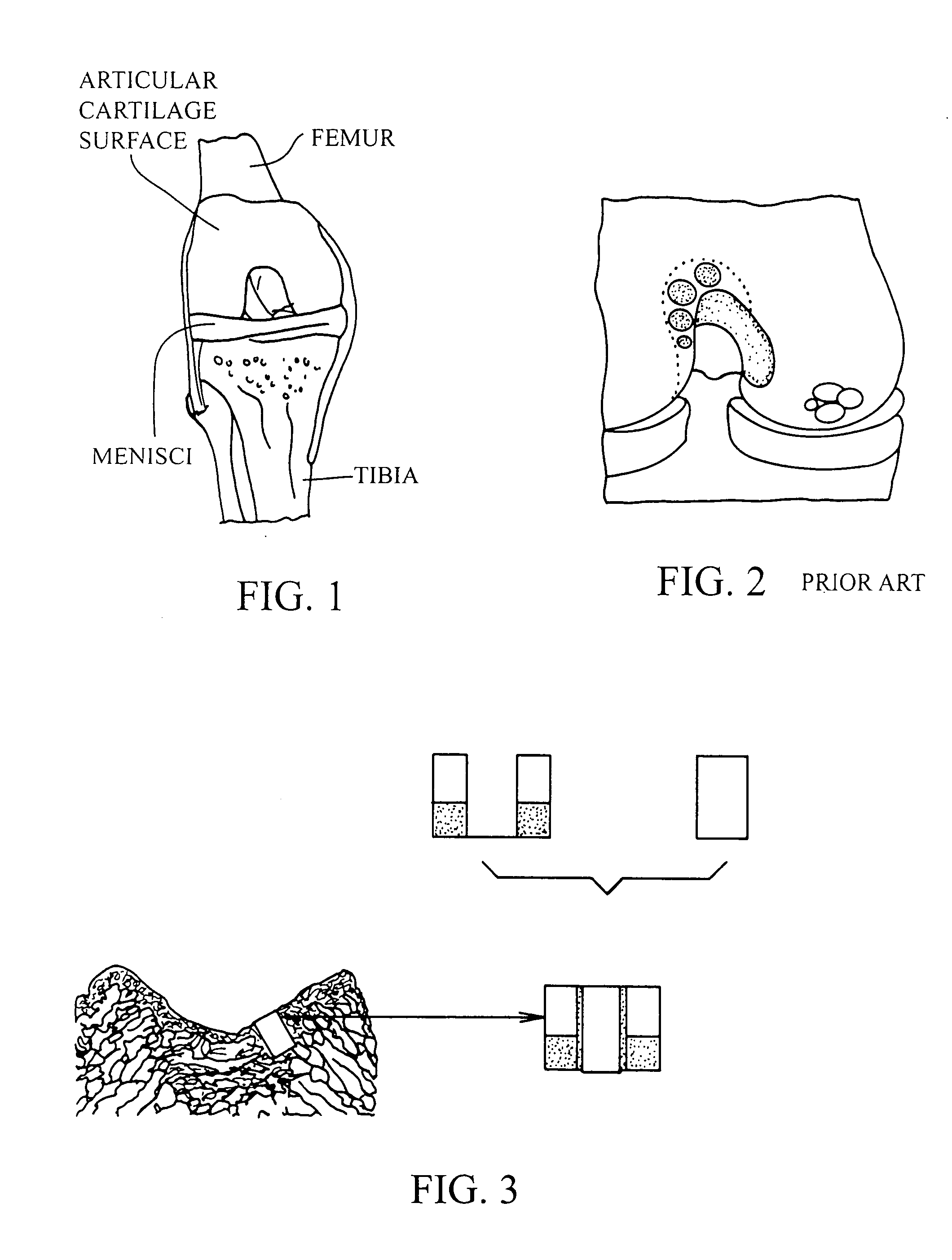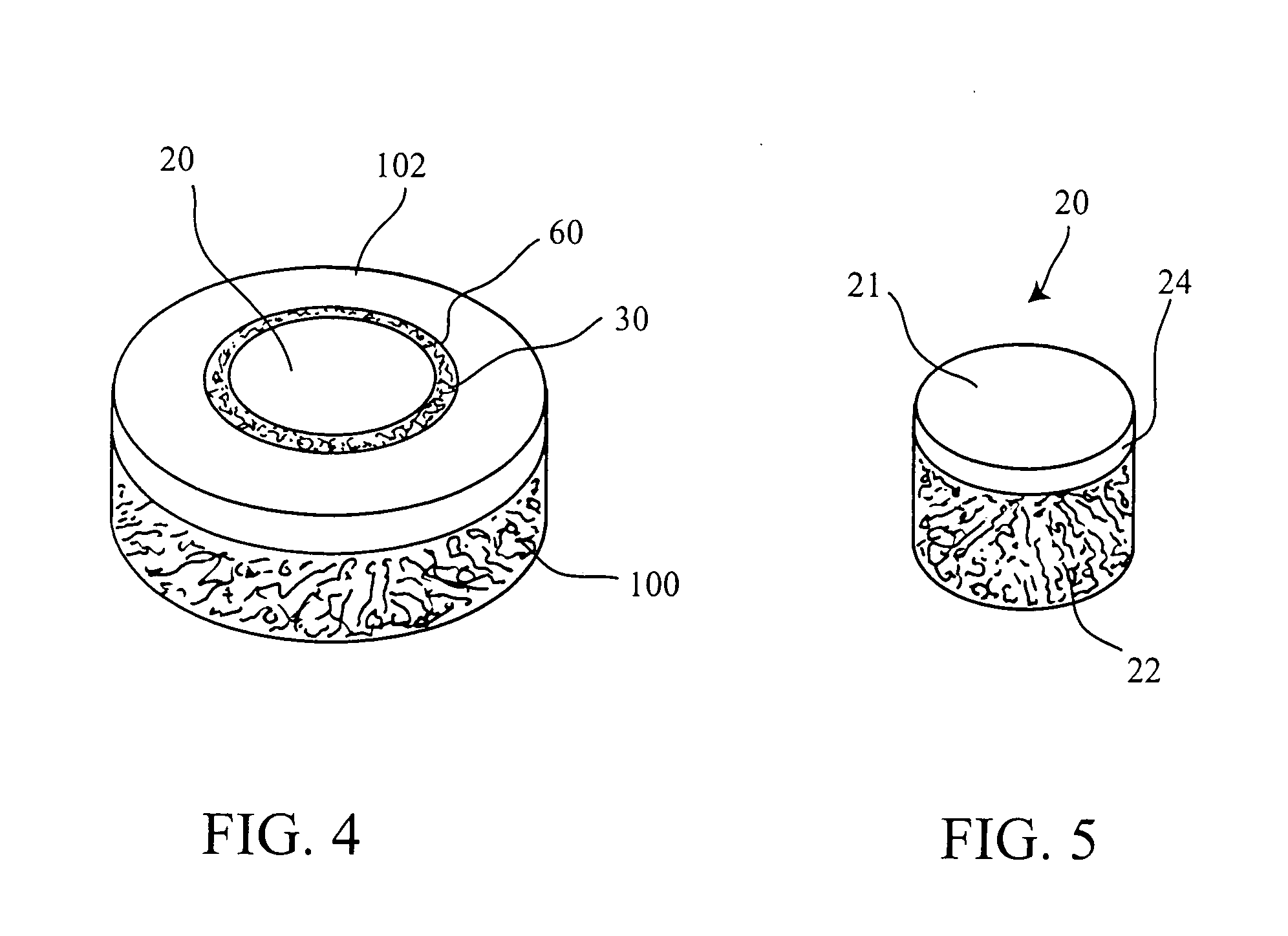Cartilage implant plug with fibrin glue and method for implantation
- Summary
- Abstract
- Description
- Claims
- Application Information
AI Technical Summary
Benefits of technology
Problems solved by technology
Method used
Image
Examples
example 1
[0052] Allograft cartilage particles having a size ranging from 0.01 mm to 0.21 mm were added to and mixed with fibrinogen solution and 30 μL of fibrinogen solution was inserted in a first automated pipette. The pipette tip was changed, the pipette was set to 60 μL and 30 μL of thrombin solution was taken into the pipette resulting in a mixed solution. The mixed solution was delivered immediately over and into the gap between the bore side wall and the plug and the fibrin glue was allowed to polymerize for 3 minutes at room temperature.
example 2
[0053] Allograft cartilage particles having a size ranging from 0.01 mm to 0.21 mm were added to and mixed with thrombin and 30 μL of thrombin solution was inserted in a automated pipette. The pipette tip was changed and 30 μL of fibrinogen solution was taken into the pipette resulting in a mixed solution. The mixed solution was delivered immediately into and over the gap between the bore side wall and the plug and the fibrin glue was allowed to polymerize for 3 minutes at room temperature.
[0054] The operation of placing a preshaped allograft implant assembly in a cartilage defect, utilizes a subchondral bone and an overlying cartilage cap plug which has been treated to remove cellular debris and proteoglycans and milled cartilage in a carrier. The steps of the operation are: (a) drilling a hole which can be in the form of a cylindrical bore in a patient at a site of a cartilage defect to a depth which is equal to the length of the bone and cartilage cap plug implant, (b) placing a...
PUM
| Property | Measurement | Unit |
|---|---|---|
| Length | aaaaa | aaaaa |
| Length | aaaaa | aaaaa |
| Length | aaaaa | aaaaa |
Abstract
Description
Claims
Application Information
 Login to View More
Login to View More - R&D
- Intellectual Property
- Life Sciences
- Materials
- Tech Scout
- Unparalleled Data Quality
- Higher Quality Content
- 60% Fewer Hallucinations
Browse by: Latest US Patents, China's latest patents, Technical Efficacy Thesaurus, Application Domain, Technology Topic, Popular Technical Reports.
© 2025 PatSnap. All rights reserved.Legal|Privacy policy|Modern Slavery Act Transparency Statement|Sitemap|About US| Contact US: help@patsnap.com


